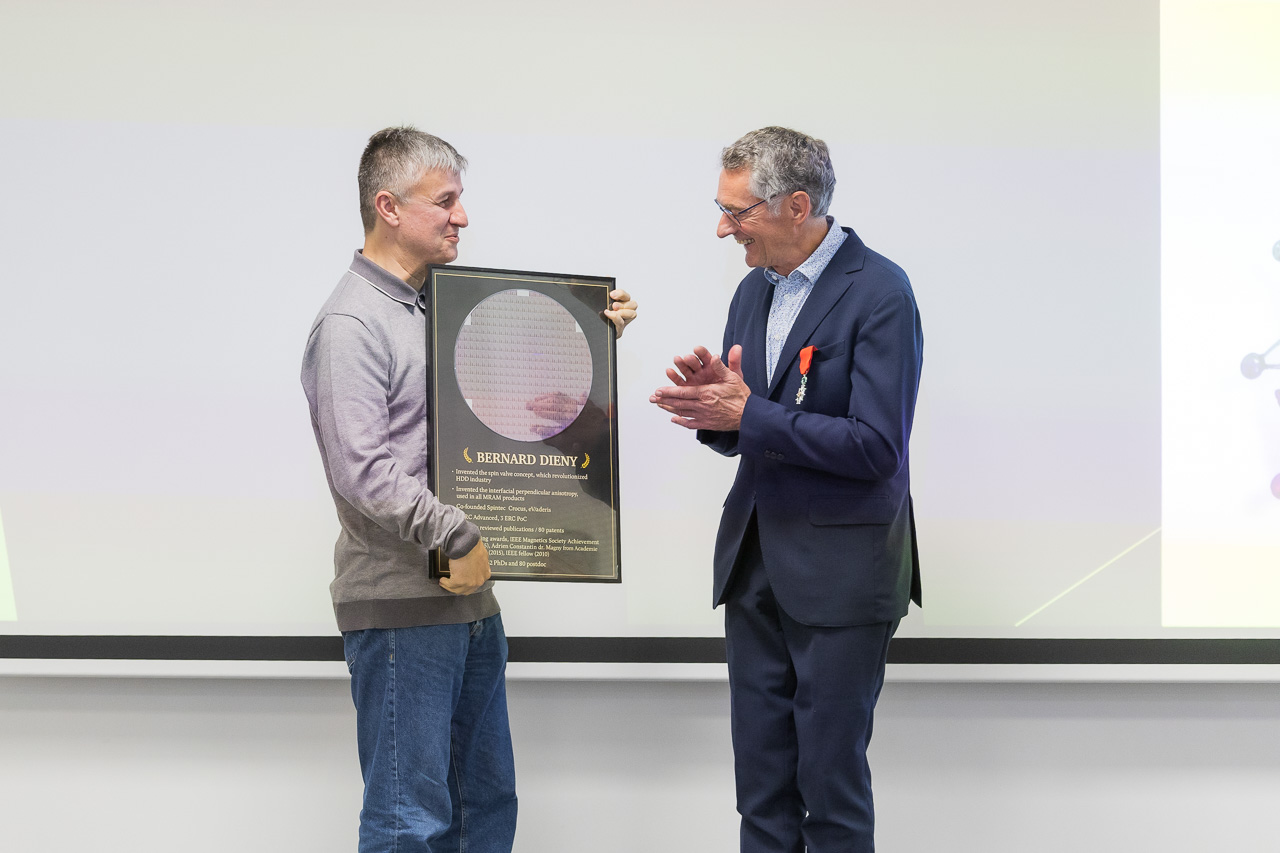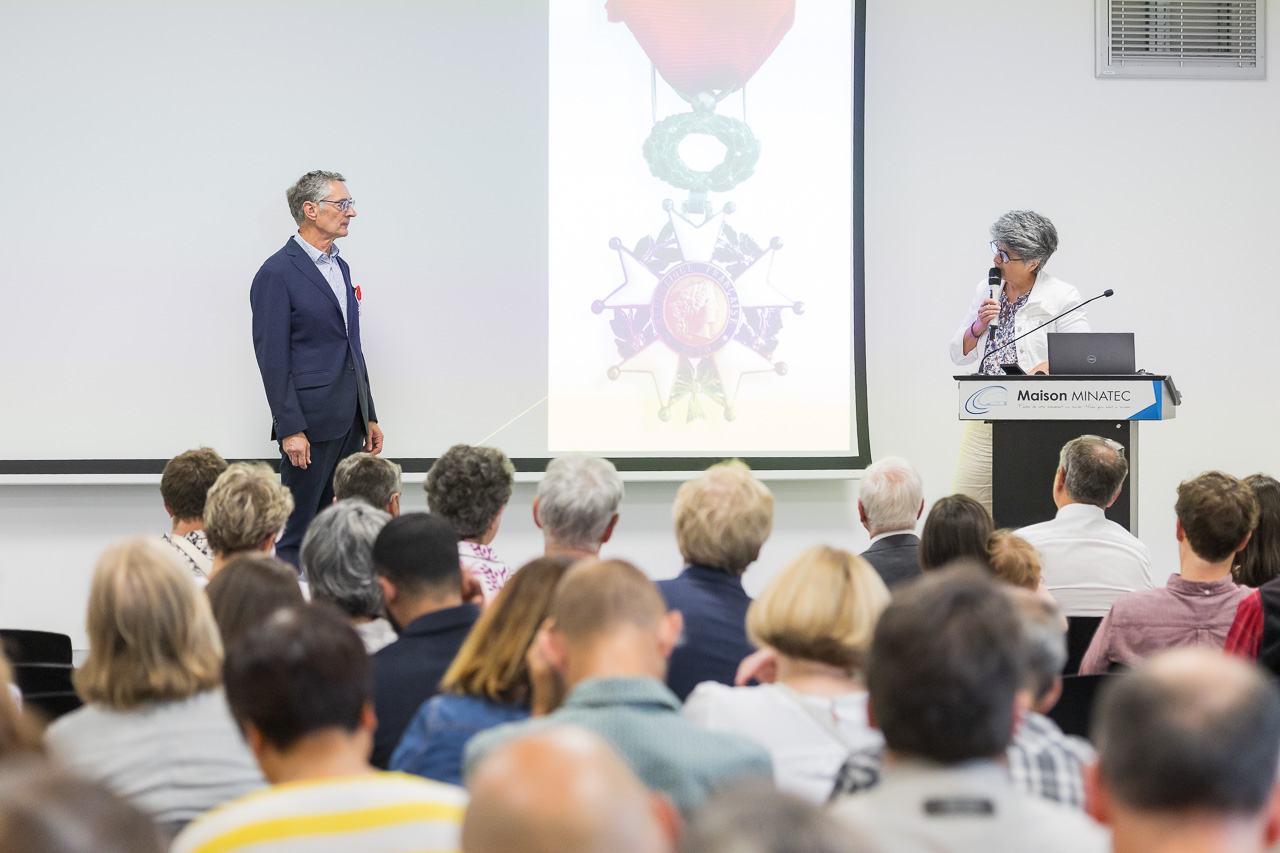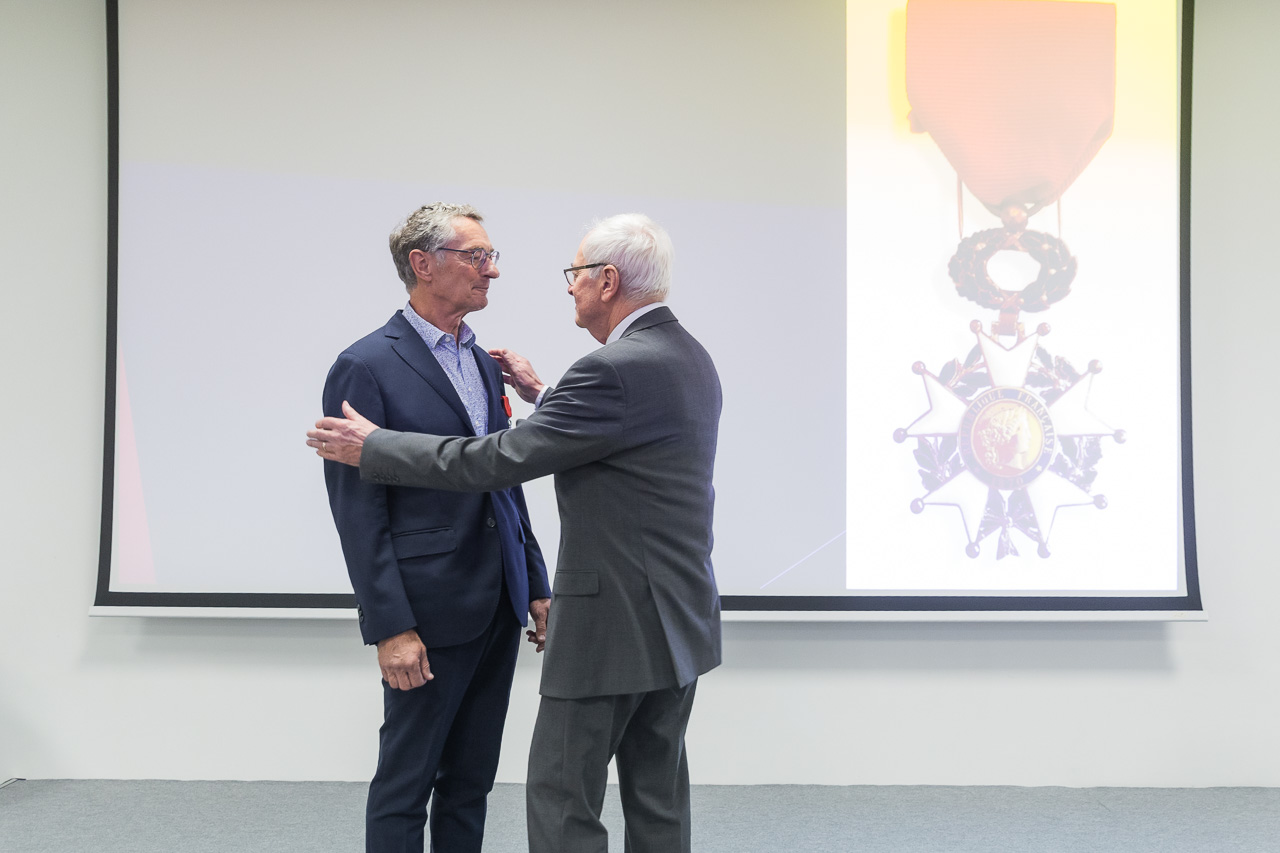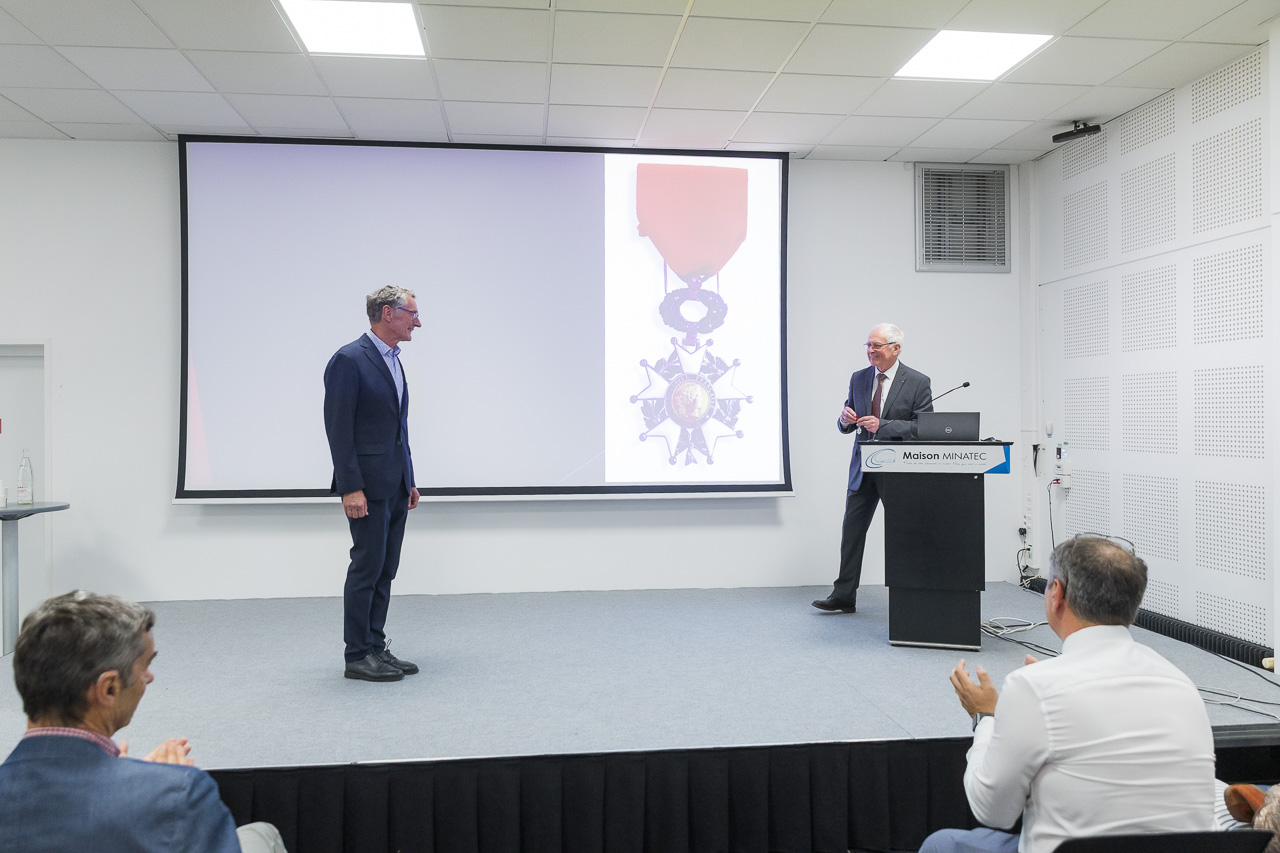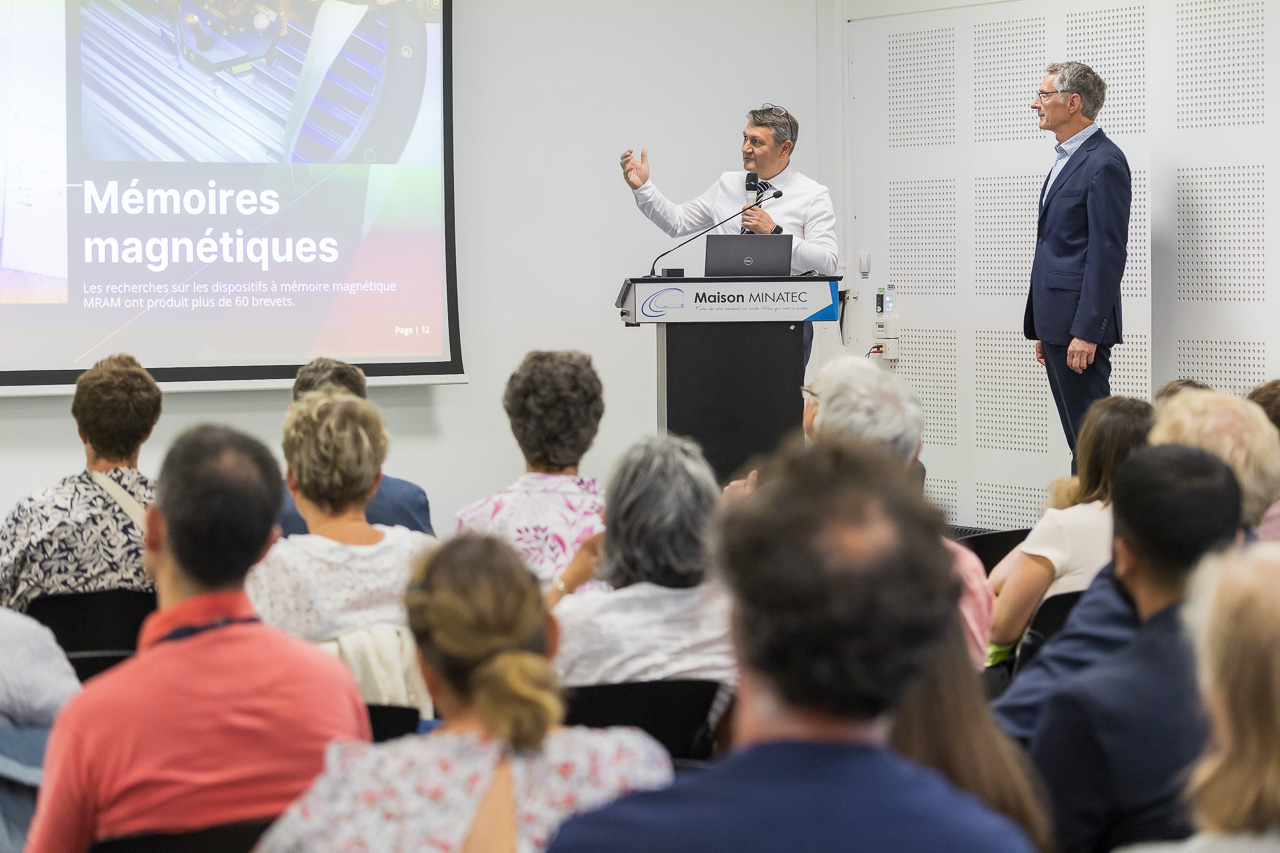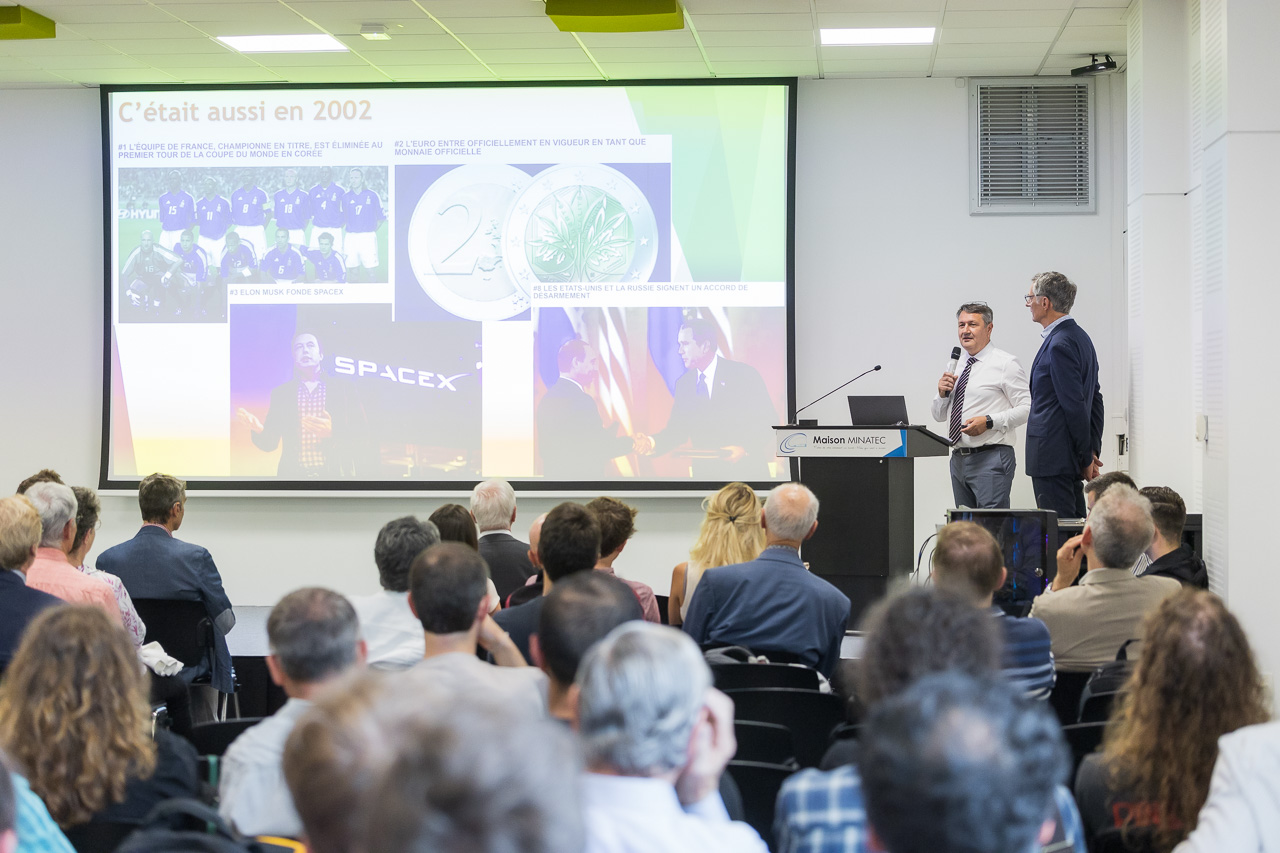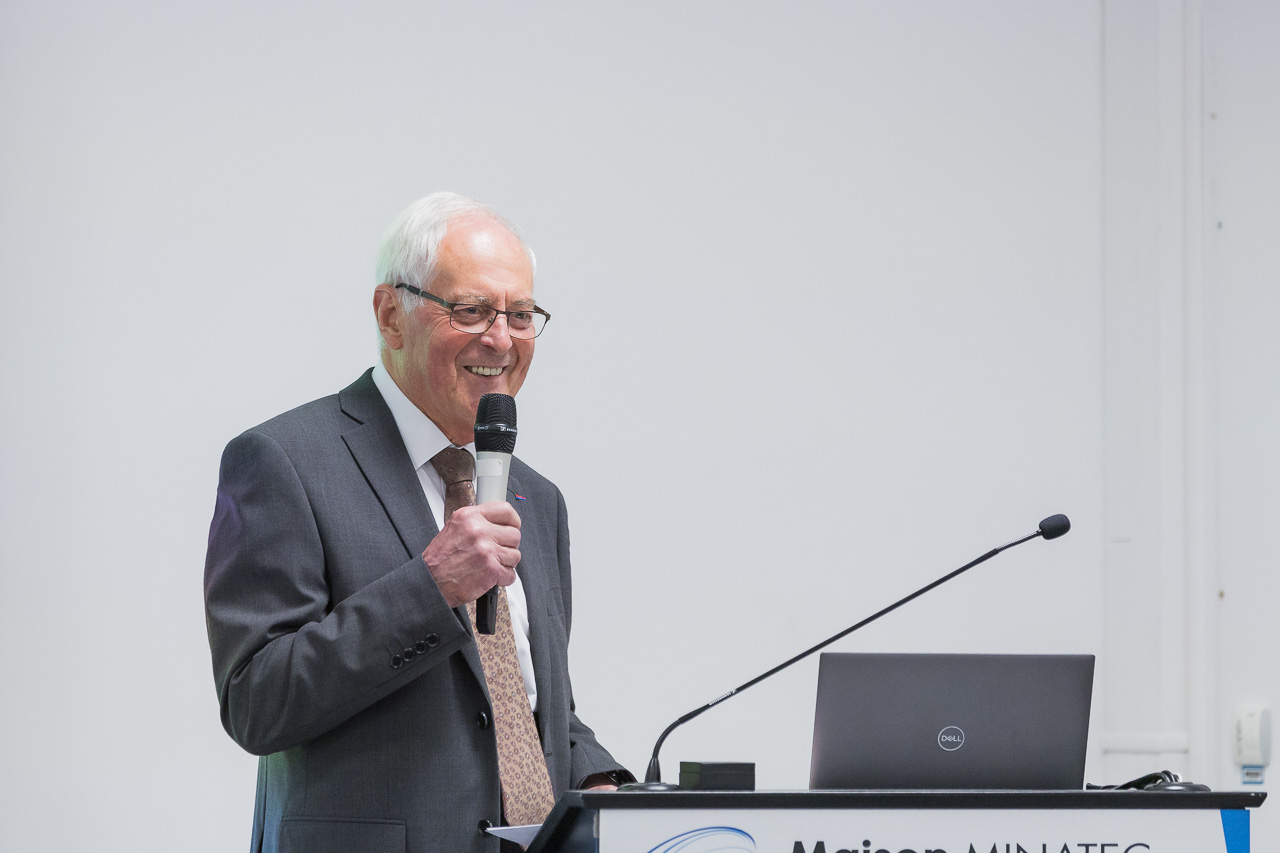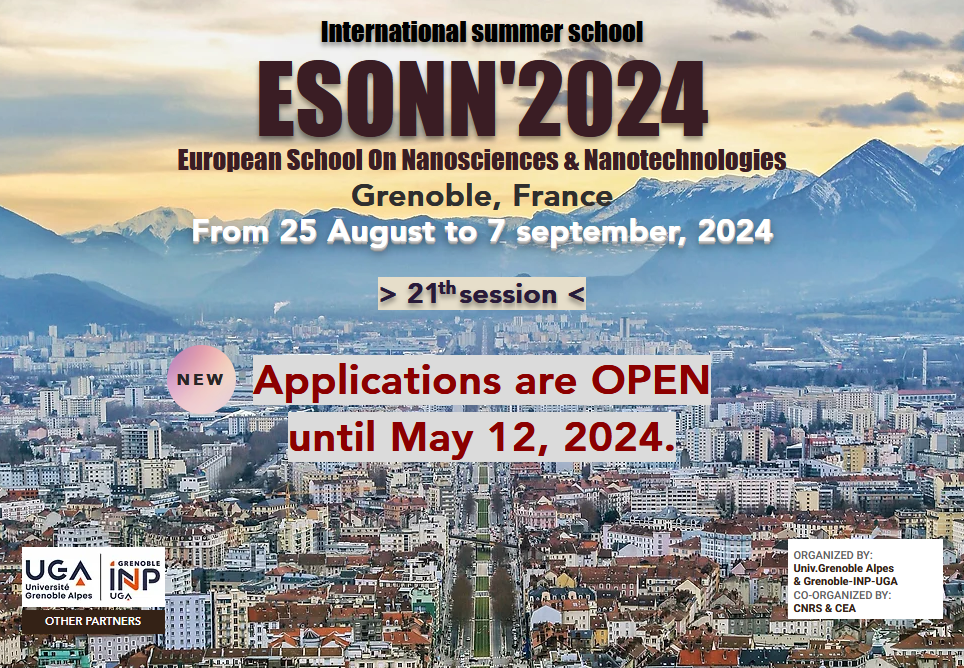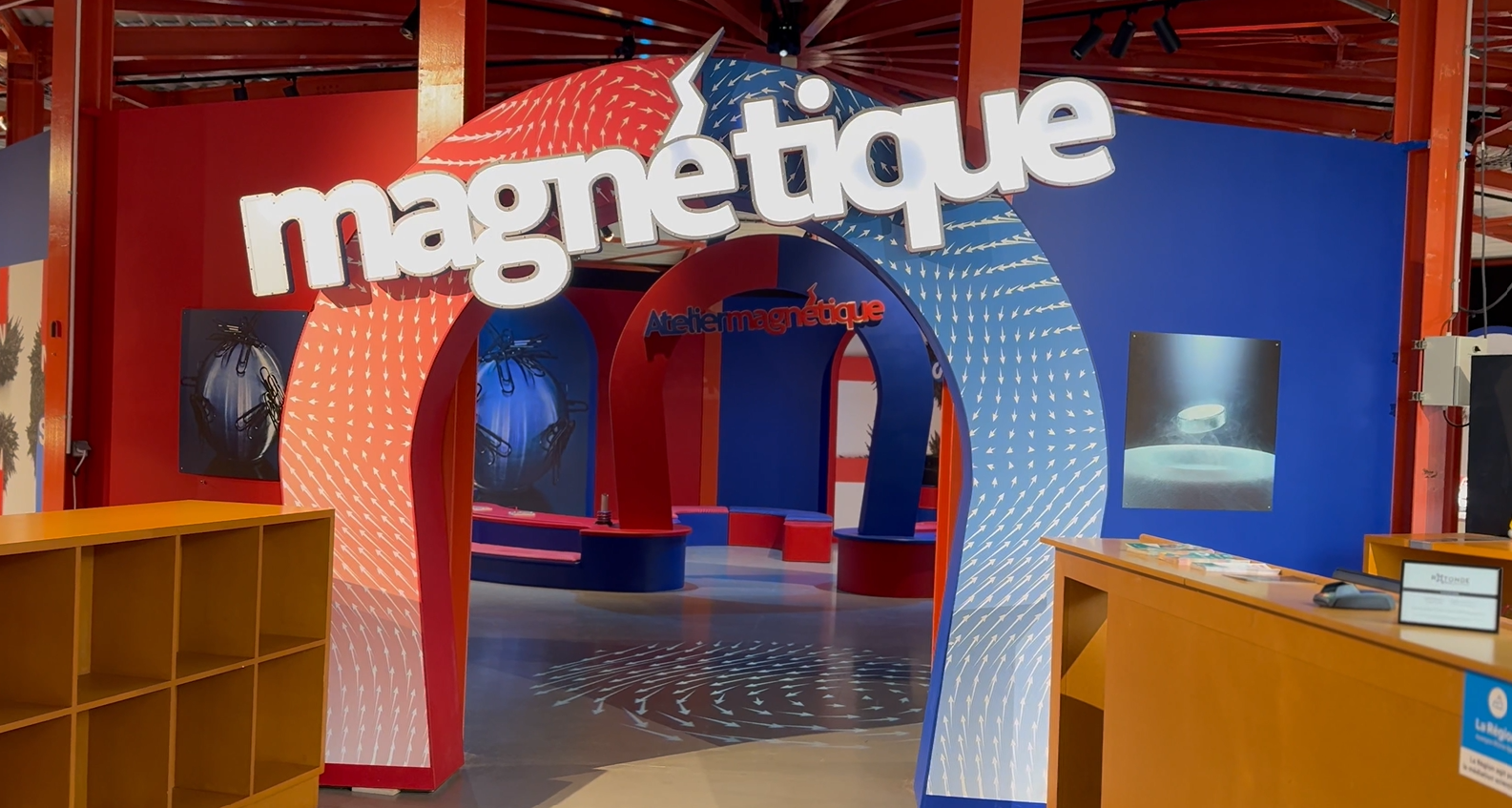Bernard Dieny was named knight of the Legion of Honour and received his decoration from Jean-Paul Duraud, member of the National Board of the SFP
Article by CEA-IRIG for Bernard Dieny
Bernard Dieny, CEA Research Director, leading figure of the SPINTEC laboratory and recipient of numerous awards, was named Knight of the Legion of Honour and received the medal from Jean-Paul Duraud, member of the National Board of the French Physical Society (SFP), on Thursday, June 5, 2025.
This prestigious distinction recognizes his entire career and outstanding contributions to scientific research. On this occasion, the SPIN research program wishes to highlight the remarkable journey of this passionate scientist.
Bernard Dieny’s career
From an early age, Bernard Dieny stood out for his insatiable curiosity for science. He recalls his first experiments with his brother, working on an electric train set—already exploring the rigour of circuitry and the intricacies of electricity. What began as childhood play quickly turned into a vocation.
Naturally, he pursued a path in scientific research by enrolling at the École Normale Supérieure de Cachan. There, he encountered Albert Fert, future Nobel Prize laureate in Physics (2007) for the discovery of GMR, and Alain Aspect, also a future Nobel Prize winner. Their inspiring lectures and contagious enthusiasm for research deeply shaped his approach to physics.
Bernard Dieny went on to complete a PhD with a strong fundamental focus at the Institut Néel in Grenoble, dedicated to the magnetism of amorphous systems—at the intersection of magnetism and the statistical physics of disordered systems. This highly positive three-year research experience, combined with the encouragement of his thesis supervisor, confirmed his desire to pursue a career in research.
In the United States: the IBM adventure and spin valves
He then seized the opportunity to move to the United States, joining the IBM Research Center in Almaden shortly after the groundbreaking discovery of giant magnetoresistance (GMR) by Albert Fert and Peter Grünberg—an achievement that would later earn them the Nobel Prize in Physics in 2007.
At the time, IBM was relying on this breakthrough to improve hard disk read heads. Bernard Dieny was given a highly ambitious mission: to identify materials capable of producing a GMR effect under magnetic fields a thousand times weaker than those initially observed. Within a few months, he developed the first “spin valves”—innovative structures made of magnetic and non-magnetic layers only a few atomic planes thick, each serving a specific function.
This major advance paved the way for the rise of spintronics and its integration into mainstream consumer technologies.
SPINTEC: creating a centre of excellence in France
Looking back, Bernard Dieny observed that the technological revolution sparked by the discovery of giant magnetoresistance had benefited countries like the United States, Japan, South Korea, and Singapore far more than those of the original discoverers. From this observation came a clear ambition: to establish in France a laboratory entirely dedicated to spintronics—one that would span the full spectrum from fundamental research to industrial innovation.
This ambition became reality in 2002, with the support of CEA, CNRS, and Université Grenoble Alpes. Together with Jean-Pierre Nozières, Bernard Dieny co-founded SPINTEC, a research laboratory that is now recognized as a leading international player in this strategic field.
Current challenges in research
Things are moving too fast for society to keep up.
When asked by the SPIN research program about his views on today’s research landscape, Bernard Dieny offers a lucid reflection on contemporary challenges.
He expresses concern over the societal impacts of accelerating digital technologies—social media, then artificial intelligence—particularly in terms of misinformation, social polarization, and the mental health of younger generations. The pace of innovation often exceeds society’s ability to adapt and make responsible use of new technologies.
Developing low-power devices, such as spintronic components, is commendable in itself. However, this often leads to a rebound effect: new uses are quickly adopted and heavily promoted, ultimately increasing overall energy consumption. In the face of this trend, Bernard highlights the lack of collective awareness around environmental stakes, and the role scientists must play in addressing it:
Our international conferences bring together researchers and engineers from all over the world. We should dedicate part of these events to discussing sustainable development challenges, to raise awareness and align levels of understanding on a global scale. Since we already work internationally, we have a unique opportunity to go beyond individual efforts and take broader, coordinated action.
Spintronics: A Path Toward Sustainable Electronics
“I am confident that spintronics will become increasingly adopted within the microelectronics community.”
